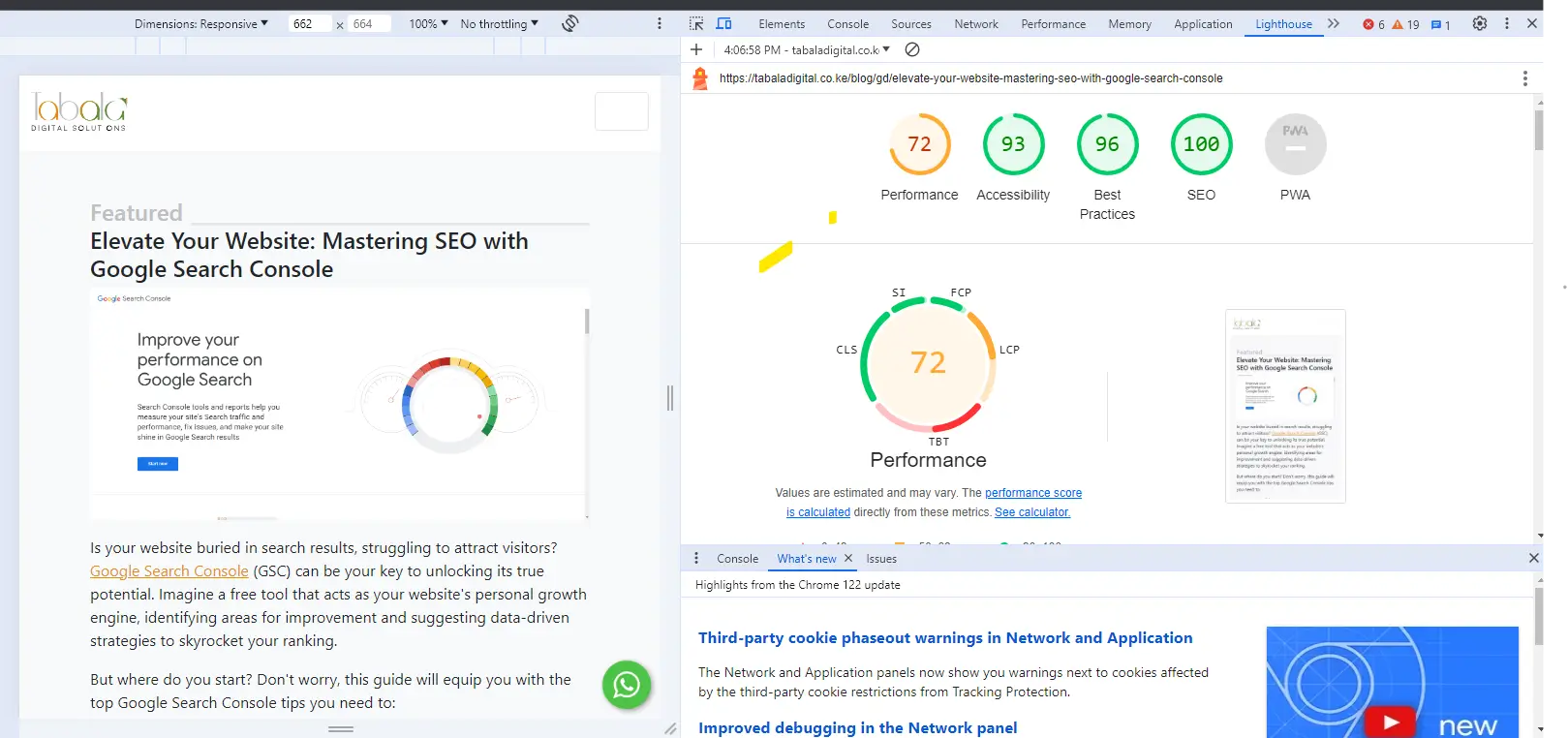Master Mobile SEO: Attract Users & Boost Conversions - In-depth Analysis

In today's mobile-first world, over 60% of searches happen on smartphones and tablets. A mobile-friendly website is not just about aesthetics; it's about performance and user experience. Imagine searching for a pizza place on your phone - mobile SEO ensures your website loads fast, has clear navigation, and displays phone numbers for easy contact - just like you'd expect.
By prioritizing mobile SEO, you can unlock a massive chunk of potential customers and experience several benefits:
-
Increased Sales & Conversions: A user-friendly mobile site makes it easier for visitors to convert, leading to more sales, subscriptions, or contact requests.
-
Improved Search Ranking: Google prioritizes mobile-friendly websites. By optimizing for mobile, you'll rank higher in mobile searches, where the majority of searches occur.
-
Enhanced Brand Reputation: A positive mobile experience reflects well on your brand, making your business appear professional and trustworthy.
Why Mobile SEO is Essential
Optimization for mobile search is not a luxury anymore, it's a necessity. Here's why:
-
Mobile-First Indexing: Google prioritizes the mobile version of your website for indexing. A clunky mobile experience tanks your search ranking.
-
Evolving Search Habits: Voice search is booming, and users find information on-the-go through apps. Your SEO needs to adapt to these changing behaviors.
Building a Mobile-Optimized Website
Think of your mobile website as a digital storefront that needs to be:
-
Fast Loading: Prioritize optimizing images, code, and leverage caching for blazing-fast loading times. Mobile users are impatient and expect a speedy experience.
-
Effortlessly Navigable: Make navigation easy and intuitive with clear, large menus that are simple to tap on small screens.
Step-by-Step Guide to Mobile SEO Optimization
Now that you're armed with the knowledge of crucial mobile SEO elements, let's roll up our sleeves and dive into the optimization process:
1. Test Your Mobile-Friendliness:
-
Google's Mobile-Friendly Test: This is your starting point. Use Lighthouse tool to assess your website and identify critical mobile responsiveness issues. Pay attention to areas like mobile text size, viewport configuration, and mobile clickability.

-
Manual Testing: Don't just rely on automated tools. Grab your smartphone and browse your website like a real user. Can you navigate easily? Do images load quickly? Is the text readable without zooming in? Take note of any frustrating experiences.
2. Measure and Improve Page Speed:
-
Google PageSpeed Insights: A tool like PageSpeed Insights analyzes your mobile site speed and provides actionable recommendations for improvement. Focus on optimizing factors like image compression, minification of code, and browser caching to achieve a fast-loading experience.
-
Google Search Console (Mobile Usability Report): This GSC provides valuable insights into specific mobile usability issues found on your website. It can identify problems like unresponsive content, clickable elements being too close together, and long task wait times.
Mastering SEO with Google Search Console: This in-depth guide dives deeper into Google Search Console and its many functionalities to help you master SEO best practices overall.
-
Set Benchmarks: Track your mobile page speed over time using tools like Google Analytics. Aim for a First Contentful Paint (FCP) of under 1.5 seconds and a Largest Contentful Paint (LCP) of less than 2.5 seconds for optimal user experience.
3. Optimize Images:
-
Image Compression: Don't sacrifice quality for speed. Use tools like TinyPNG or Img2GO to compress image files without significant visual loss.

However, consider exploring even more advanced options:
Modern Image Formats: Consider using newer image formats like WebP, AVIF, or HEIF instead of PNG or JPEGs. These formats offer better compression ratios, resulting in smaller file sizes without sacrificing image quality. This is especially useful for detailed or colorful images. Use tools and plugins to convert your images to these formats for improved mobile performance.
-
Responsive Images: Implement responsive image techniques (e.g., srcset attribute) to ensure images automatically adjust to different screen sizes. This prevents slow loading times on mobile devices where users might be on slower data connections.
-
Descriptive Alt Text: Include relevant alt text for all images. This not only helps with SEO by providing context to search engines, but also enhances accessibility for visually impaired users who rely on screen readers.
Attract More Clients & Drive Sales with Our Digital Marketing Agency
-
SEO: Unlock more SEO traffic and see real results with our expert optimization services.
-
Content marketing: Attract and retain customers with high-quality, engaging content that drives traffic and generates leads.
-
Social media marketing: Our team creates epic content that will get shared, get links, and attract traffic on social media platforms.
-
Google Ads: Effective paid strategies with clear ROI. Let our team help you get the most out of your ad spend.
-
Email marketing: Connect with your audience and drive conversions with targeted email campaigns.
-
Web design and development: A visually appealing and user-friendly website is key to attracting and retaining visitors. Our team can help you create a website that converts.
4. Review and Update Content:
-
Readability for Mobile: Revisit your website content with a mobile-first mindset. Break down long paragraphs into bite-sized chunks.
-
Strategic Formatting: Use clear and concise headings (H1, H2, etc.) to structure your content and make it scannable.
-
Bullet Points and Lists: Leverage bullet points and numbered lists to present key information in an easily digestible way for mobile readers.
-
Consider Font Size and Style: Choose easy-to-read fonts that render well on smaller screens. Avoid overly decorative fonts that might be difficult to decipher on mobile devices.
5. Technical SEO for Mobile:
-
Structured Data: Implement structured data markup to provide search engines with richer information about your website content, which can lead to more informative search results and potentially higher click-through rates.
-
Mobile Schema: Explore mobile-specific schemas like FAQ schema or Local Business schema to enhance your mobile search result snippets.
- AMP (Accelerated Mobile Pages): While not always necessary, consider AMP for specific content pieces (e.g., news articles) to ensure blazing-fast loading speeds on mobile devices.
Are you keen on diving deeper into the world of technical SEO? Check out the article Unlock Top Rankings: Master Technical SEO Like a Pro for more insights.
6. User Experience (UX) Optimization:
-
Intuitive Navigation: Mobile users expect a seamless navigation experience. Ensure your menus are clear, easy to find, and responsive to touch.
-
Minimize Popups and Intrusive Ads: Avoid overwhelming mobile users with intrusive popups or excessive ads that can hinder navigation and lead to frustration.
-
Clickable Buttons: Make sure all buttons are large enough for easy tapping on a mobile screen. Test button placement and functionality to ensure a smooth user experience.
7. Local SEO for Mobile:
- Claim Your Google Business Listing: This is crucial for local businesses. A verified and optimized GMB listing helps you appear in local search results and provides valuable information to mobile users searching for your business.
Google Business Profile - The Secret to Local SEO Success: This comprehensive guide delves into the power of Google Business Profile and its functionalities, equipping you to dominate local search results.
-
Mobile-Friendly Location Pages: Ensure your location pages are mobile-friendly, including clear contact information, address, and high-quality mobile-optimized images.
-
Local Keywords: Incorporate relevant local keywords throughout your website content and GMB profile to improve your discoverability in local mobile searches.
8. Mobile-Friendly Location Pages: Ensure your location pages are mobile-friendly, including clear contact information, address, and high-quality mobile-optimized images.
- Focus on Local User Intent: Go beyond just listing your address. Anticipate what mobile users searching for your business might be looking for and provide that information upfront.
9. Monitor and Analyze:
- Mobile Analytics: Use Google Analytics to track mobile-specific metrics like mobile traffic, bounce rate, and conversion rates. Analyze this data to identify areas for improvement and measure the effectiveness of your mobile SEO efforts. Pay attention to metrics like:
* Mobile Search Ranking: Track your ranking for relevant local mobile keywords.
* Mobile Click-Through Rate (CTR): See how often users click on your search results after finding you on mobile.
- Mobile Conversion Rate: Measure how effectively your mobile website converts visitors into customers or leads
The mobile SEO landscape is constantly evolving. Stay updated on the latest Google mobile search guidelines and best practices to ensure your website remains optimized for mobile users.
By implementing these strategies and continuously refining your mobile search optimization approach, you'll create a website that not only ranks higher in search results but also provides a superior mobile experience.
This translates to more engaged visitors and ultimately, loyal customers converted directly through your mobile site.
Reap the Rewards of Mobile SEO
Mobile SEO isn't a one-time fix; it's an ongoing journey of optimization. By implementing these strategies and diligently monitoring your website's performance with analytics tools, you can unlock a treasure trove of benefits:
- Dominate Mobile Search & Engage Users: Craft a mobile-friendly website that ranks higher in search results, keeps users happy, and drives qualified traffic that converts into loyal customers.
Ready to Unleash the Mobile SEO Powerhouse?
Don't wait! Take action today:
1. Test Your Mobile-Friendliness: Identify areas for improvement with Google's Mobile-Friendly Test tool.
2. Dive Deeper with Mobile SEO Resources: Explore a variety of resources to stay ahead of the curve:
-
Google Search Central Mobile Guide: Get the latest official guidelines and best practices directly from Google Search Central for the latest Google mobile search guidelines and best practices.
-
Moz Beginner's Guide to SEO: Gain a comprehensive understanding of SEO fundamentals.
-
Backlinko Mobile SEO Guide: Dive deep into advanced strategies and actionable mobile SEO tips.
Take these steps and unlock the power of mobile SEO for your website. You'll attract, engage, and convert mobile users like never before, thriving in today's mobile-first world.
Start your Mobile web optimization journey today, reach out to us for a tailored mobile SEO strategy designed to elevate your website's visibility in mobile search rankings.

Published by: Abala Tom
Date: Mar 21, 2024